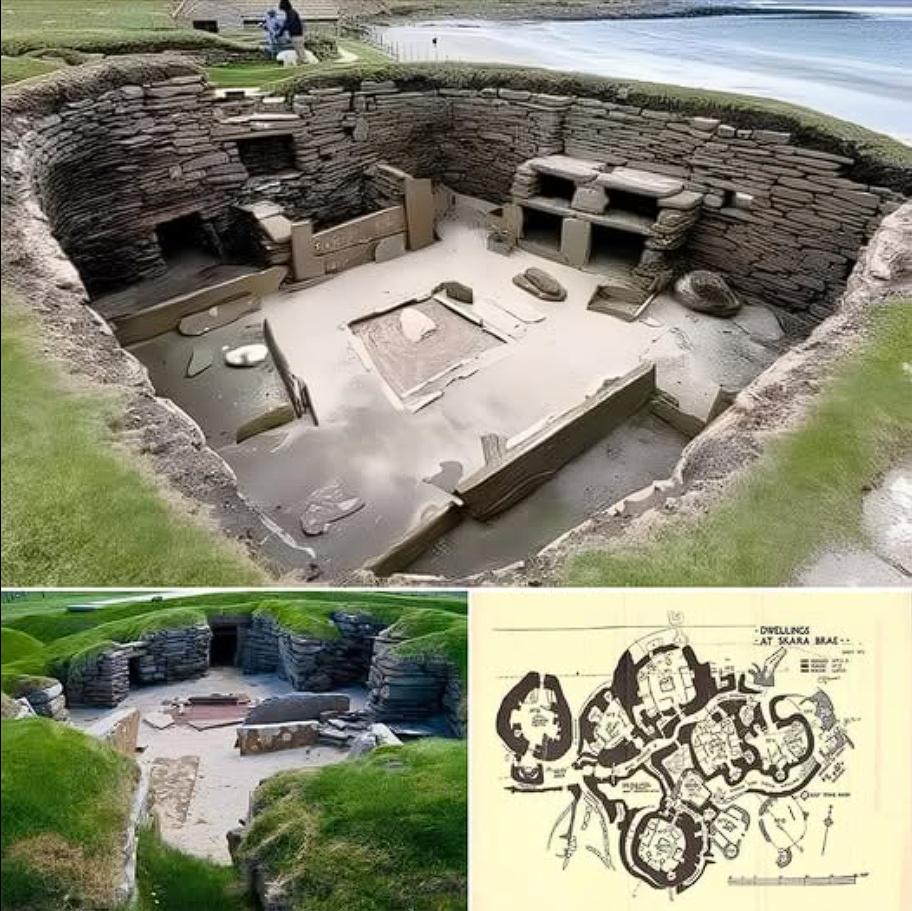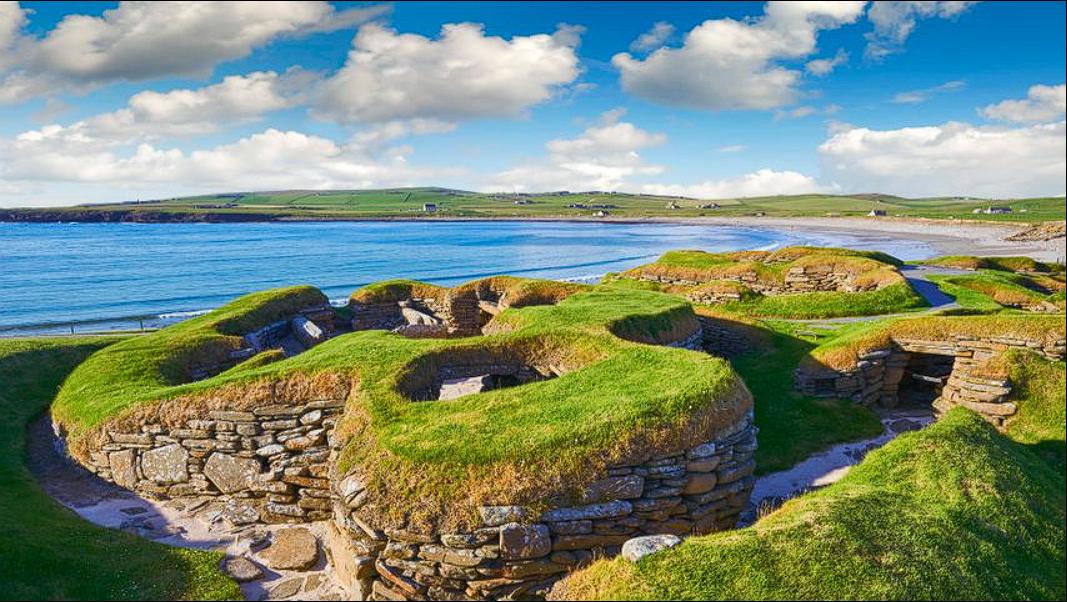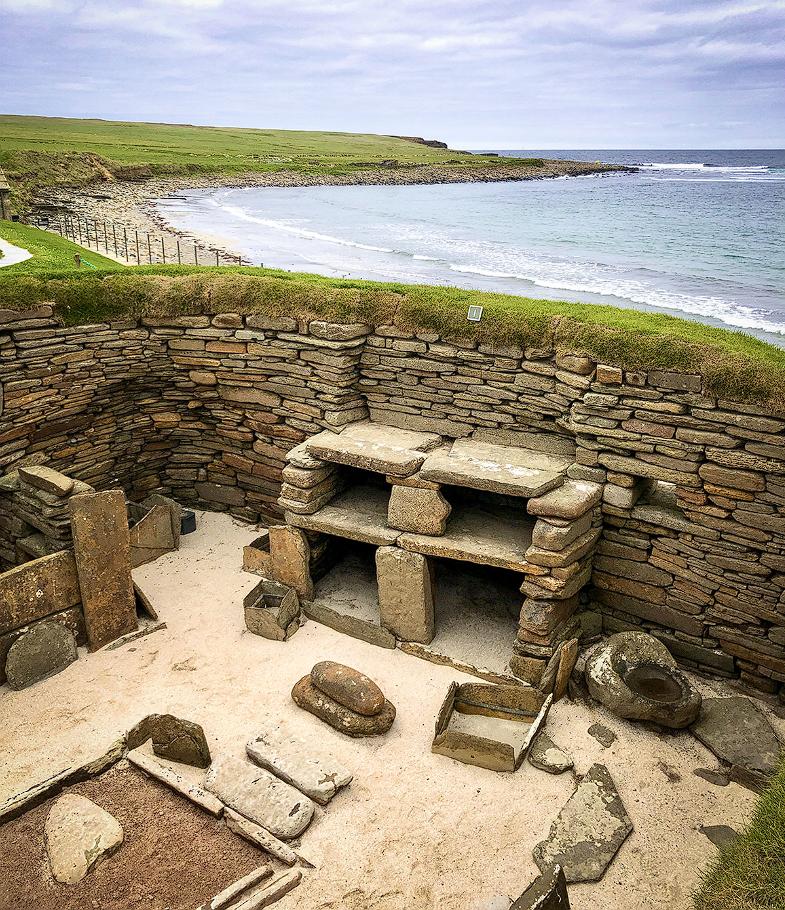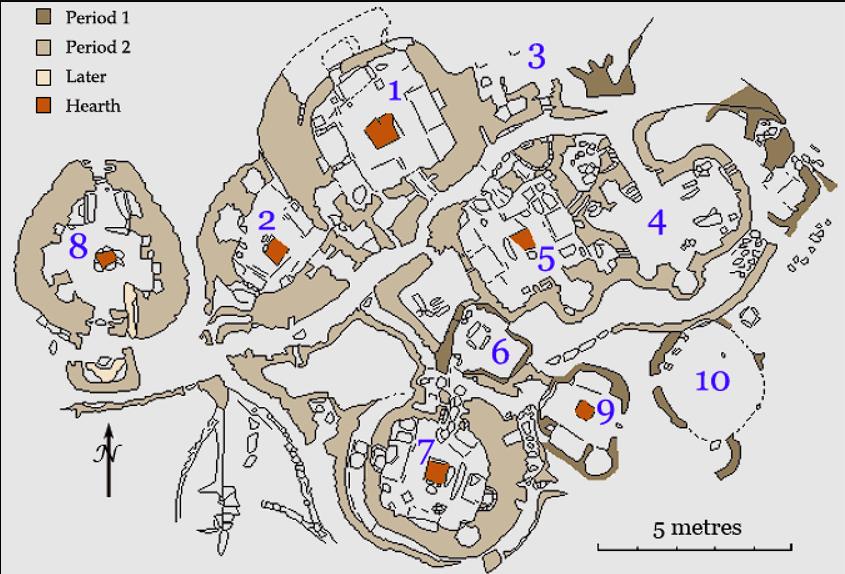In 1850, a fierce storm swept across the Orkney Islands, dramatically revealing Skara Brae, a Neolithic village frozen in time. Often referred to as Scotland’s Pompeii, this 5,000-year-old settlement provides an unparalleled glimpse into the lives of our ancient ancestors, showcasing their ingenuity and resilience.

The Dramatic Discovery of Skara Brae
The dramatic unveiling of Skara Brae by a storm in 1850 transformed our understanding of Neolithic life in Scotland.
The 1850 Storm
A powerful storm exposed Skara Brae, revealing a long-buried secret that had remained hidden for millennia.
- Unveiling a Hidden Village:
- The storm’s impact on the landscape uncovered the remarkably preserved stone houses of Skara Brae, dramatically bringing the ancient village to light.
- A storm uncovered the village.
- Preservation Through Sand:
- The village had been preserved beneath layers of sand, protecting it from the elements and ensuring the survival of its structures and artifacts.
- Sand preserved the village.
- “Scotland’s Pompeii”:
- The sudden exposure of the well-preserved village drew comparisons to Pompeii, highlighting the exceptional state of its preservation.
- It is called Scotland’s Pompeii.
Neolithic Settlement
Dating back to 3200 BC, Skara Brae represents a significant Neolithic settlement, offering insights into early human communities.

- 5,000-Year-Old Village:
- The village’s age, approximately 5,000 years, places it firmly within the Neolithic period, a time of significant advancements in human society.
- It is very old.
- Eight Stone Houses:
- The settlement consists of eight remarkably well-preserved stone houses, connected by a network of narrow passageways, showcasing early architectural design.
- It has stone houses.
- Preserved Interiors:
- Inside the houses, archaeologists found stone beds, dressers, and storage boxes still intact, providing a snapshot of daily life in the Neolithic era.
- The interiors are preserved.
Early Inhabitants
The inhabitants of Skara Brae were skilled farmers, fishermen, and hunters, demonstrating their adaptability and resourcefulness.

- Skilled Farmers and Fishermen:
- They cultivated crops, raised livestock, and fished the surrounding waters, showcasing their ability to thrive in a challenging environment.
- They were skilled farmers and fishermen.
- Close-Knit Community:
- The design of the village suggests a close-knit community, with interconnected houses and shared spaces, fostering social cohesion.
- They were a close community.
- Tool Crafting:
- They crafted tools from bone and stone, wove fabrics, and made pottery, demonstrating their ingenuity and craftsmanship.
- They crafted tools.
Life and Society in Skara Brae
The details within Skara Brae’s homes and artifacts reveal the complexity and sophistication of its ancient inhabitants.
Home Design and Functionality
The design of the Skara Brae houses reflects the inhabitants’ ability to adapt to the harsh Orkney winters.
- Central Hearths:
- The houses featured central hearths for warmth and cooking, an early form of home heating, showcasing their practical approach to design.
- They had central hearths.
- Stone Construction:
- The use of stone for construction provided durability and insulation, protecting the inhabitants from the elements.
- They used stone construction.
- Passageway Network:
- The interconnected passageways facilitated movement between houses, providing shelter from the wind and rain.
- They had interconnected passageways.
Social Hierarchy and Display
The placement of stone dressers and the size of beds within the houses suggest a social hierarchy and a sense of pride in displaying possessions.
- Stone Dressers:
- The presence of stone dressers suggests a sense of pride in displaying possessions, reflecting social status and personal identity.
- They had stone dressers.
- Larger Beds:
- The larger beds likely belonged to community leaders, hinting at a social hierarchy and the importance of leadership within the village.
- They had larger beds.
- Community Organization:
- The layout and contents of the houses provide insights into the community’s organization and social structure.
- The layout shows community organization.
Diet and Resourcefulness
Analysis of animal bones, seeds, and tools has revealed a diet rich in cattle, sheep, fish, and foraged plants, highlighting the inhabitants’ adaptability and resourcefulness.

- Diverse Diet:
- The inhabitants consumed a diverse diet, including cattle, sheep, fish, and foraged plants, demonstrating their ability to utilize available resources.
- They had a diverse diet.
- Adaptability:
- Their ability to adapt to the challenging environment of the Orkney Islands highlights their resourcefulness and resilience.
- They were adaptable.
- Evidence of Agriculture:
- The presence of seeds and tools indicates agricultural practices, showcasing their ability to cultivate crops and manage livestock.
- They practiced agriculture.
Skara Brae’s Legacy and Modern Significance
Skara Brae’s preservation and its status as a UNESCO World Heritage Site ensure its legacy is passed down to future generations.
UNESCO World Heritage Site
Skara Brae’s designation as a UNESCO World Heritage Site underscores its cultural and historical significance.
- Global Recognition:
- The UNESCO designation brings global recognition to Skara Brae, highlighting its importance as a site of exceptional cultural value.
- It has global recognition.
- Preservation Efforts:
- The designation supports preservation efforts, ensuring that the site is protected and maintained for future generations.
- It is preserved.
- Tourism and Education:
- Skara Brae attracts visitors from around the world, serving as an educational resource and promoting awareness of Neolithic life.
- It is a tourist destination.
Captivating Visitors
Skara Brae continues to captivate visitors, offering a tangible connection to the past and a sense of wonder at the lives of our ancestors.
- Walking Through History:
- Walking through the stone passageways of Skara Brae allows visitors to experience the village firsthand, connecting with the lives of its ancient inhabitants.
- Visitors can walk through history.
- Presence of Ancient Civilization:
- The preserved structures and artifacts evoke a sense of the presence of an ancient civilization, fostering a connection to the past.
- It evokes the presence of an ancient civilization.
- Human Resilience:
- Skara Brae stands as a testament to human resilience, demonstrating the ability of our ancestors to build complex societies in challenging environments.
- It shows human resilience.
Testament to Human Ingenuity
Skara Brae’s preservation and study contribute to our understanding of Neolithic life and the ingenuity of early human communities.
- Understanding Neolithic Life:
- The site provides valuable insights into Neolithic life, including housing, diet, and social organization.
- It helps us understand Neolithic life.
- Early Architectural Design:
- The stone houses and passageways showcase early architectural design and the ability to adapt to environmental challenges.
- It shows early architectural design.
- Shaping the World:
- Skara Brae demonstrates that even in remote areas, our ancestors built complex societies that shaped the world thousands of years ago.
- It shows ancient societies.
Skara Brae’s dramatic discovery and exceptional preservation provide an invaluable window into Neolithic life in Scotland. Its enduring legacy as a UNESCO World Heritage Site ensures that its story of human ingenuity and resilience continues to captivate and educate visitors from around the world.

CÁC TIN KHÁC
Mary Walton: The Forgotten Inventor Who Helped Clean Up America’s Cities
Tomb of Queen Nefertari in the Valley of the Queens, Egypt
Discover the Hypostyle Hall of the Temple of Hathor at Dendera
Venus de Losange: Unveiling the Mystery of a 20,000-Year-Old Paleolithic Icon